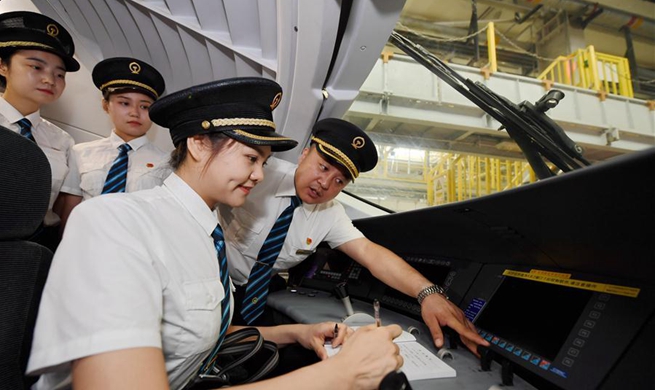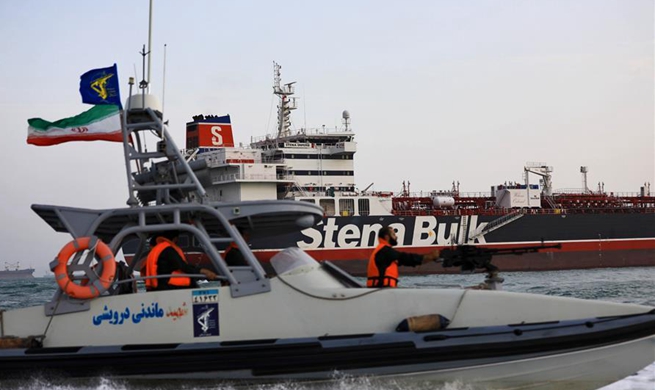By Pankaj Yadav
NEW DELHI, July 22 (Xinhua) -- India took a "giant leap" to reach the Moon by launching its second Moon Mission, or Chandrayaan-2, aimed at making a soft landing and collecting new knowledge about the Lunar Surface like exploring the south polar region of the Moon, confirming presence of water molecules and new rock types with unique chemical composition.
The countrymen anxiously awaited the launch till 1443 hours on Monday when the gigantic rocket "GSLV-Mk-III" carrying the Orbiter, Lander "Vikram" and Rover "Pragyaan" took off from the Satish Dhawan Space Centre in Sriharikota off the Bay of Bengal coast located in southern state of Andhra Pradesh.
Minutes after the launch, the rocket successfully put Chandrayaan-2 into Earth's orbit, and a booming applause reverberated inside the control room as the scientists who have been working hard for the mission congratulated one another, hugged and shook hands.
Recorded TV footage showed Prime Minister Narendra Modi keenly watching the big launch at his office standing besides his chair, and then applauding the successful launch.
The feat was also hailed by people from across different strata of the society, including Bollywood actors, sports personalities, and others.
According to the Indian Space Research Organisation (ISRO), the Mission successfully entered into the Earth's Orbit and is doing well while heading towards its destination. Expected to make the soft landing on Sept. 7, it will make India the fourth country, after the United States, Russia, and China, to achieve the feat.
Weighing around 640 tonnes, the rocket "GSLV-Mk-III" is 44 meters long or as tall as a 15-storey building. Termed as India's heaviest and biggest rocket, it has the capacity of launching satellites weighing as much as four tonnes.
India's first mission to Moon - "Chandrayaan-1" was launched by Polar Satellite launch Vehicle, PSLV-C11 on Oct. 22, 2008. It made more than 3,400 orbits around the Moon, and was operational for 312 days till Aug. 29, 2009. The lift-off mass of "Chandrayaan-1" was 1,380 kilograms.
"Chandrayaan-2" is a follow-on mission to the 'Chandrayaan-1', comprising of an Orbiter, Lander (Vikram) and Rover (Pragyaan). Unlike, Chandrayaan-1, this Lunar Mission will attempt to soft land "Vikram" on the Lunar surface and deploy a six-wheeled Rover (Pragyaan), which will carry out scientific experiments on the Moon.













